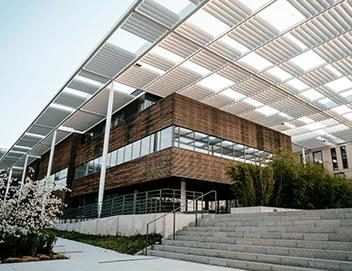Eco-friendly construction materials are essential in building a sustainable future. These materials, such as reclaimed wood, recycled metal, and bamboo, significantly reduce the environmental impact of construction projects. They are often sourced from renewable resources and require less energy to produce compared to traditional materials. By incorporating sustainable materials, buildings can achieve better energy efficiency and lower carbon footprints.
Additionally, eco-friendly materials can improve indoor air quality and enhance the overall health and well-being of occupants. The use of green construction materials also supports the growth of a circular economy, promoting the reuse and recycling of resources. Ultimately, adopting sustainable materials in construction is a crucial step towards a more resilient and environmentally responsible built environment.
The Cost of Downtime in AV Systems
Consider this: a corporate meeting room headset fails, or a projector won’t switch inputs. Every minute spent diagnosing and fixing is lost productivity. In higher-stakes environments — like lecture theatres or government briefings — outages are more impactful.
Globally, the AV Remote Monitoring and Management (AV RMM) market is projected to reach USD 40.16 billion by 2033, up from about USD 27.43 billion in 2024, with a CAGR of 5.6% reflecting rising demand for resilience and oversight. Business Research InsightsIn Australia, the Pro AV market is forecast to grow at a CAGR of 3.96% from 2025 to 2033, rising from USD 90.3 million in 2024 to 132.3 million by 2033. IMARC Group That growth is driven, in part, by organisations seeking dependable, scalable AV infrastructure — and monitoring is a key enabler.
Why AV Monitoring Matters Locally
- Proactive alerts & diagnostics — Detect faults before users flag them.
- Centralised multi-site oversight — Manage dozens of rooms across branches, campuses, or states.
- Performance insights — Spot patterns, identify underperforming devices, and prioritise upgrades.
- Lower onsite support costs — Many issues can be resolved remotely.
- Improved user confidence — No more frustration when systems don’t work mid-meeting.
Use Cases: Real-World Australian Context
- A university in Brisbane monitors lecture hall systems across multiple buildings, ensuring they are class-ready each morning.
- A state government department in Adelaide supervises AV setups in civic centres, enabling cross-site issue correlation.
- Private enterprises with offices in multiple states coordinate AV support from a central operations centre rather than depending on local integrators.
Tips to Get Started
- Map your AV inventory — Understand device types, locations, and criticality.
- Define alert thresholds — Decide what status shifts trigger tickets.
- Integrate with service desk — Automatically create tickets from alerts.
- Evaluate incremental rollout — Start with key sites and expand.
- Train local teams — Ensure staff understand remote diagnostics and escalation paths.
Final Thought
In a world where hybrid work, digital collaboration, and connected campuses are the new normal, systems that fail silently can be the silent killers of productivity.
By adopting AV monitoring now, Australian organisations gain visibility, control, and resilience — turning silent AV infrastructures into a strategic asset rather than a liability.






